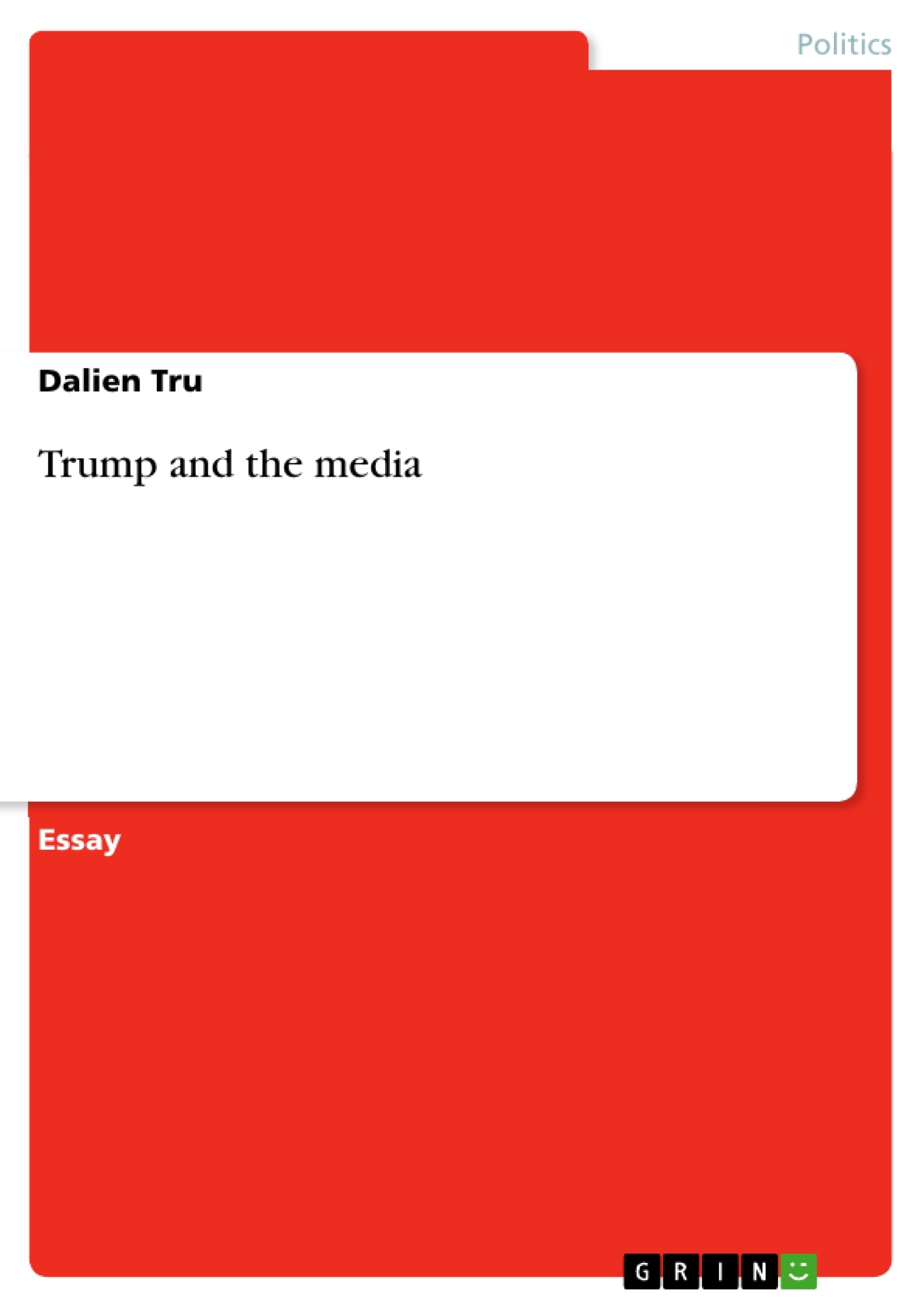When Donald Junior Trump 2016 firstly announced his intentions to run as President of the United States he was followed by a series of amused comments and articles in the media. Virtually no established media attributed Trump the chances to win the race for the nomination, not to mention the presidency itself.
But week after week and primary after primary he forged ahead and finally he won the primaries. How could this once unimaginable situation become reality? The following essay tries to answer this question, whilst including factors like the internal structure of Trumps competitors-field and the individual weaknesses of his contestants. But yet, the main-factor of Trumps success - and therein lies the core-issue of this essay - can may be found by taking a deeper look at the intensity and the manner of the media coverage of Trump and his campaign.
Table of Contents
- 1. What happened?
- 2. Why did it happen?
Objectives and Key Themes
This text aims to analyze the factors contributing to Donald Trump's victory in the 2016 Republican Party presidential primaries and his subsequent nomination. It explores the interplay of various elements to explain this unexpected outcome.
- The fragmented nature of the Republican candidate field.
- The individual weaknesses of Trump's competitors.
- The influence of the Tea Party movement.
- The role of media coverage in amplifying Trump's message.
- Trump's aggressive campaign style and use of nicknames.
Chapter Summaries
1. What happened?: This chapter recounts Donald Trump's 2015 presidential announcement and the initial media reaction, which largely dismissed his candidacy as a long shot. It then details Trump's surprising success in accumulating more primary votes than any other Republican candidate in US history, ultimately securing the party's nomination. The chapter establishes the central question: what factors contributed to this unexpected victory?
2. Why did it happen?: This chapter delves into the reasons behind Trump's success. It highlights the unusually large and fragmented field of Republican candidates, arguing that this lack of a strong, unified opposition benefited Trump. The chapter further analyzes the individual weaknesses of Trump's competitors, such as Jeb Bush's perceived unflattering image and Marco Rubio's repetitive debate performances. Trump's aggressive campaigning style, characterized by the use of insulting nicknames for his rivals, is also discussed as a contributing factor. Furthermore, the chapter examines the influence of the Tea Party movement, noting that Trump's embrace of some of its most radical positions, like questioning Obama's birth certificate and advocating a Muslim ban, secured the movement's support. Finally, the chapter introduces the significant role of media coverage in amplifying Trump's message, suggesting that the media's focus on his controversial statements, rather than critically analyzing them, inadvertently boosted his campaign.
Keywords
Donald Trump, 2016 Republican primaries, media coverage, Tea Party movement, campaign strategy, candidate field fragmentation, political opponents, insults, nicknames, election campaign, US media landscape.
Frequently Asked Questions: Analysis of Donald Trump's 2016 Republican Primary Victory
What is the purpose of this text?
This text analyzes the factors contributing to Donald Trump's unexpected victory in the 2016 Republican Party presidential primaries and his subsequent nomination. It explores the interplay of various elements to explain this outcome.
What topics are covered in the analysis?
The analysis covers several key themes, including the fragmented nature of the Republican candidate field, the individual weaknesses of Trump's competitors, the influence of the Tea Party movement, the role of media coverage in amplifying Trump's message, and Trump's aggressive campaign style and use of nicknames.
What happened in the 2016 Republican primaries, according to this text?
The text recounts Donald Trump's 2015 presidential announcement and the initial media dismissal of his candidacy. It then details his surprising success in accumulating more primary votes than any other Republican candidate, ultimately securing the party's nomination. The central question explored is: what factors contributed to this unexpected victory?
Why did Donald Trump win the 2016 Republican primaries, according to the analysis?
The analysis attributes Trump's success to several factors: the unusually large and fragmented Republican candidate field, the individual weaknesses of his competitors (such as Jeb Bush's image and Marco Rubio's debate performances), Trump's aggressive campaigning style and use of nicknames, the support of the Tea Party movement due to his embrace of their radical positions, and the significant role of media coverage in amplifying his message (often without critical analysis).
What are the key takeaways from the chapter summaries?
Chapter 1 establishes the unexpected nature of Trump's victory, setting the stage for the analysis. Chapter 2 delves into the multiple factors that contributed to this victory, highlighting the interplay of political strategy, media influence, and the weaknesses of his opponents within a fragmented field.
What keywords are associated with this analysis?
Keywords include: Donald Trump, 2016 Republican primaries, media coverage, Tea Party movement, campaign strategy, candidate field fragmentation, political opponents, insults, nicknames, election campaign, US media landscape.
What is the structure of the original document?
The original document includes a table of contents, a statement of objectives and key themes, chapter summaries, and a list of keywords. This provides a structured overview of the analysis of Donald Trump's 2016 Republican primary victory.
- Quote paper
- Dalien Tru (Author), 2016, Trump and the media, Munich, GRIN Verlag, https://www.grin.com/document/387033



